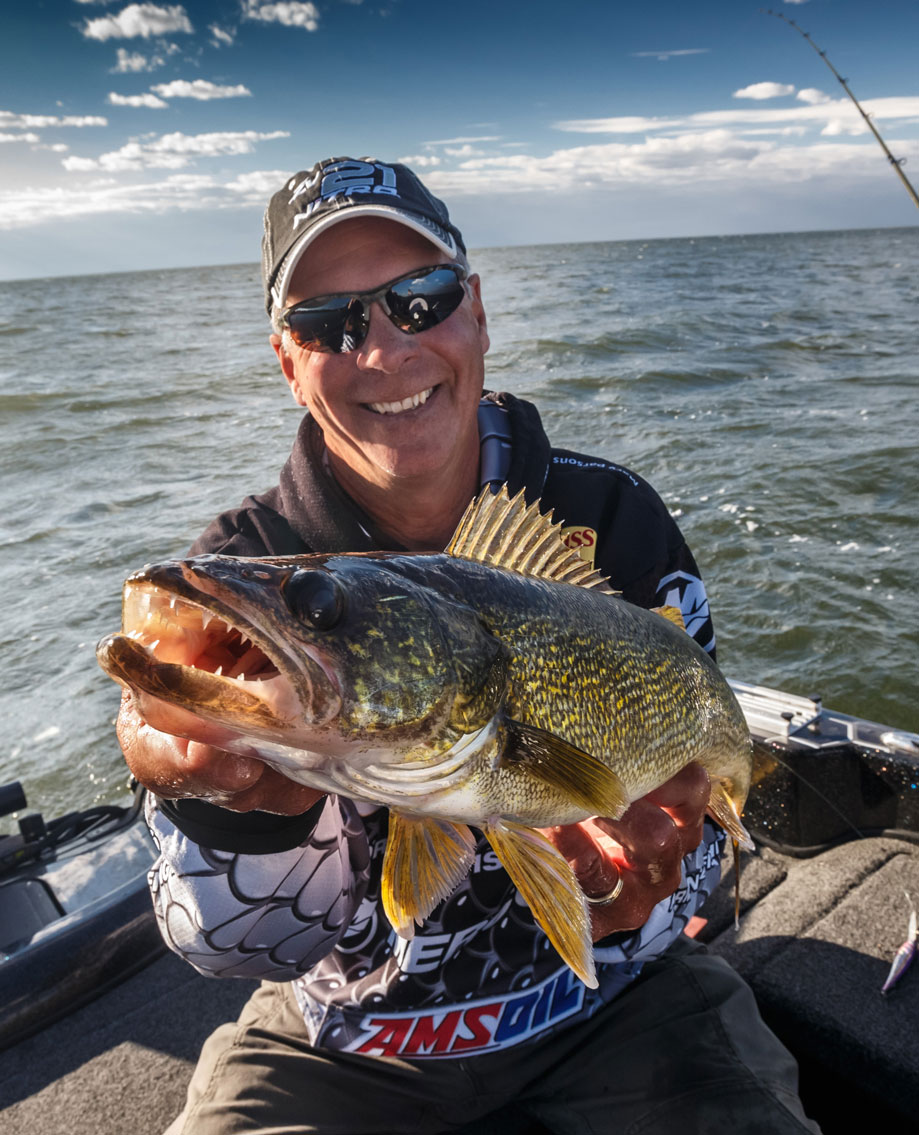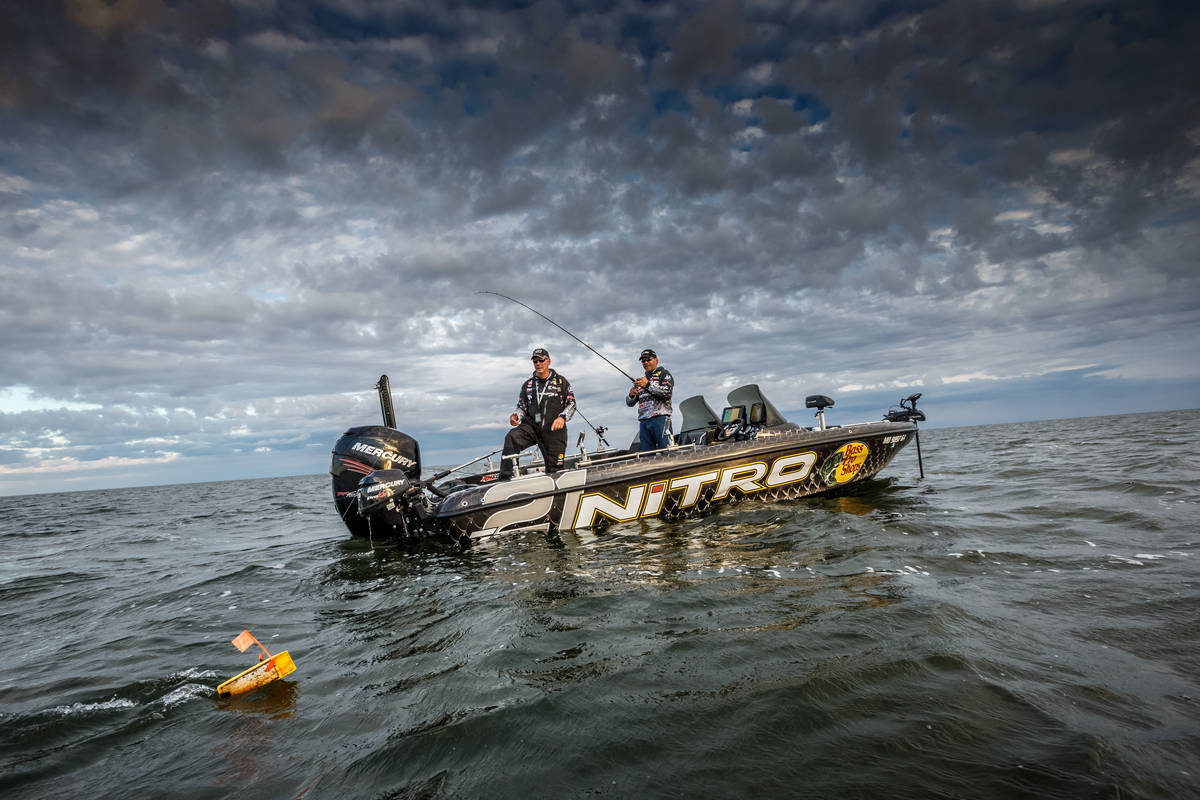 Early summer for walleyes is a transition period. Fish are past the “post spawn” period and are moving into more summer patterns. Traditionally, transition time can mean tough fishing, but if you go at it with the strategy of “playing the spread”, or in walleye fishing terms, covering as much water as possible, then you’ll up your odds of contacting and catching more walleyes this time of year.
Early summer for walleyes is a transition period. Fish are past the “post spawn” period and are moving into more summer patterns. Traditionally, transition time can mean tough fishing, but if you go at it with the strategy of “playing the spread”, or in walleye fishing terms, covering as much water as possible, then you’ll up your odds of contacting and catching more walleyes this time of year.
Covering water encompasses spreading lures out both horizontally as well as vertically. Walleyes can be tight to the structure, or suspended in open water. It really depends on the particular lake you’re fishing. This is a time of the season that it’s to your advantage to be well versed in trolling tactics and have the right gear to get the job done.
Choosing the right baits is one step in the process. What is the main forage in the lake you’re fishing? Knowing this will help you determine the style lure you should at least start with. Typically we break this down to one of two shapes; shad-style and minnow-style. The shad-style baits like the Berkley Flicker Shad are great where the fish are feeding on stuff like shad, perch, crappie and similar forage. In lakes where the walleyes are feeding on things like smelt, cisco and alewives we opt for a longer bait like Berkley Flicker Minnows. Early in the year, the forage size tends to run smaller than later in the season, so start off with Flicker Shads in sizes 4 and 5, or Flicker Minnows in size 7. By no means does this mean you couldn’t catch walleyes on a “shad lake” using a size 9 Flicker Minnow, but it’s probably not the first lure you should tie on to start the day.
Running the right lures is just one part of the puzzle. You have to put those baits at the right depth for them to get bit. The right depth is what we call “the feeding zone”. As you move around graphing for fish to set up on, you may mark some fish suspended 25 feet down over 35 feet of water. Your first instinct might be to run your lures at 25 feet, but there’s a good chance you won’t get bites doing that. Walleyes normally feed “up”, meaning their feeding zone is above where they are positioned. Running your lures at 20 feet, just above the fish, will typically be a better plan of attack. Fish that are relating to structure and hanging tighter to the bottom are another story. While running lures just above these fish can trigger a few to bite, many times these fish are better triggered by running lures right in front of their faces.
Knowing exactly how deep your lures run is one of the most important keys to being successful at trolling for any species, especially walleyes. For years we have relied on the data provided by the gang at Precision Trolling to know how much line to let out to get certain baits to specific depths. It was simply a matter of referring to the depth chart for the particular lure we were fishing, first in their books (which are no longer in print), and then on stickers that can easily be attached to the lid of your crankbait box for easy reference. Now, with their convenient Precision Trolling Data App, available for both Android and iPhone formats, having this information is right at your fingertips.
Spreading lures vertically sometimes means using methods that allow lures to run deeper than they normally run on their own. This is a common practice this time of year since we are typically using smaller sized lures that are not designed to dive very deep on their own. In open water it may mean adding a weight in front of the lure, like an Off Shore Tackle Guppy Weight on an OR16 Pro Snap to gain more depth. Or in situations where we are trolling structure, we often incorporate lead core line to get the baits to the desired depth. The Precision Trolling App offers information on weighting systems too, and it offers some really neat new data with regards to lead core trolling.
 Of course when we hear the term “covering water” everyone thinks about getting those baits out from the boat and covering a wider swath of water. In open water, that means utilizing boards and the best one’s out there are the Off Shore Tackle OR12 Side Planers. These boards are ballasted so they run true in the roughest conditions, and even sit upright when still in the water. These boards are rugged too, built to last you for many seasons of fishing.
Of course when we hear the term “covering water” everyone thinks about getting those baits out from the boat and covering a wider swath of water. In open water, that means utilizing boards and the best one’s out there are the Off Shore Tackle OR12 Side Planers. These boards are ballasted so they run true in the roughest conditions, and even sit upright when still in the water. These boards are rugged too, built to last you for many seasons of fishing.
When fishing structure however, you don’t want to get the lures too far away from the boat as you need more control to keep the lures on the right contour. This is where we opt to use long rods – really long rods, to get the baits just far enough from the boat to reduce any spooking factor. The Bass Pro Shops Walleye Angler Series offers both 10 and 12 foot 2 piece trolling rods that are ideal for structure trolling applications.
Early summer can bring some unique challenges when it comes to walleye fishing. But understanding how to “play the spread” to cover the water both horizontally and vertically will go far in helping you get your Next Bite.










